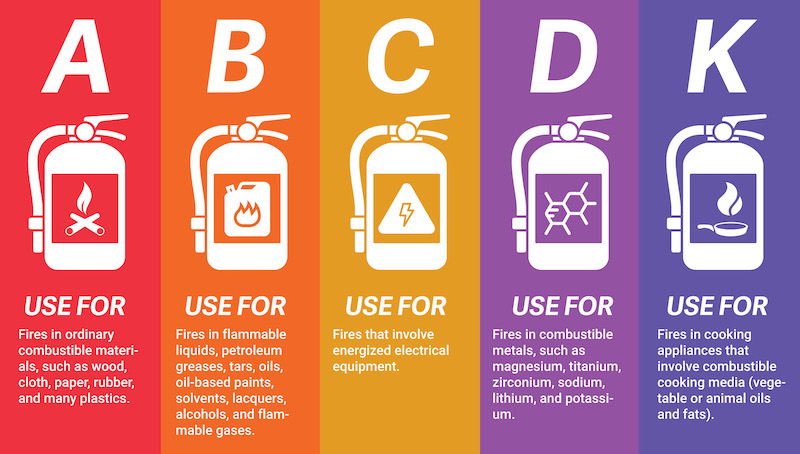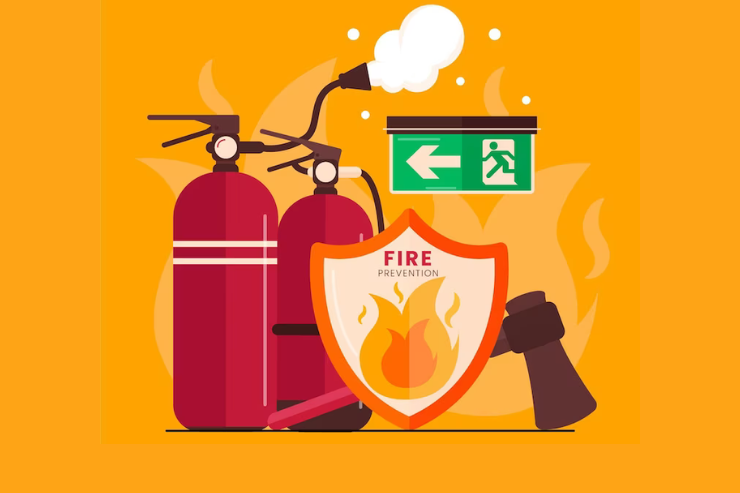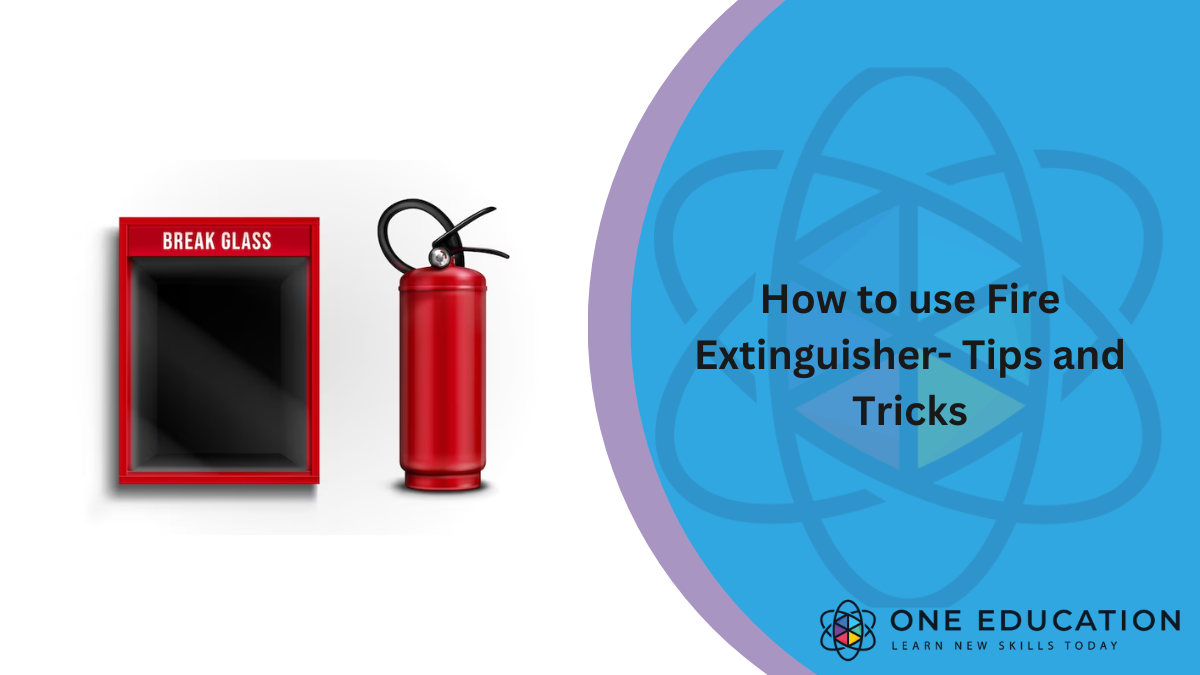Introduction
To prevent Fire events, it is necessary to rescue people with fire protection.
Extinguishers are essential equipment for preventing and controlling fires. These portable tools are designed to suppress and put out tiny fires before they have a chance to grow into potentially disastrous infernos.
They come in a variety of forms. Each of these is designed to put out a particular kind of fire.
Such as using common flammable liquids, electrical equipment, or even more unusual situations like flammable metals.
Any fire safety strategy must include fire extinguishers since they are the first line of defence against a fire’s potential for destruction.
They are available and essential in homes, workplaces, automobiles, and public settings because of their small size and user-friendly design. Knowing why fire extinguishers are important and how to use them properly.
What is a Fire Extinguisher?
A portable firefighting tool called a fire extinguisher is used to put out small fires before they spread out of control. Depending on the kind and class of fire they are meant to put out, these devices often include a variety of extinguishing agents, such as water, foam, dry chemical powders, or carbon dioxide.
A handle or lever and a nozzle or hose are included with fire extinguishers. When the handle is squeezed, it functions by forcing the extinguishing agent out under pressure. People are frequently instructed to handle fire extinguishers according to the PASS method, which stands for Pull, Aim, Squeeze, and Sweep. This method makes sure that the extinguishing solution is directed towards the root of the fire, suffocating it by removing its source of oxygen.

Who Should Use a Fire Extinguisher?
An essential safety tool, a fire extinguisher, should only be used by those who have obtained the appropriate training. The following people should use a fire extinguisher:
Trained personnel: The primary individuals who should use a fire extinguisher are those trained in its operation.
Firefighters: Professional firefighters are highly trained in fire suppression and are equipped with various fire extinguishers as part of their firefighting equipment. They use these extinguishers to control and extinguish fires in emergencies.
Residents of the building: In non-emergency situations, Fire extinguishers put out small flames before they spread and get out of control. They should only use the extinguisher if they have obtained the necessary training and are confident in their capacity to do so safely.
Safety Staff: Some companies or institutions appoint particular safety personnel or fire wardens to put out fires with fire extinguishers. To properly perform their duties, these people often receive specialised training.
Homeowners: For potential small kitchen or other area fires, homeowners should keep a fire extinguisher. It’s critical for homeowners to examine and maintain their extinguishers periodically and to be taught about their appropriate use.
It’s important to stress that using a fire extinguisher improperly can be risky and useless. Fire extinguishers are also limited in their application and are only meant to put out small, contained fires. It is not suggested to use a portable fire extinguisher if a fire is already out of control or is too big; instead, the area should be evacuated right away. Take our Fire Extinguisher Course and use your fire extinguishers like a pro!

5 Steps To Using a Fire Extinguisher
To use a Fire Extinguisher, you need to know the PASS technique. It is the easiest way to use a Fire Extinguisher like a professional. Whether you’re working as a fireman or you are a normal person, you should know how to use it.
By using the following five methods, one can easily use a fire extinguisher at Fire Events
- Pull
- Aim
- Squeeze
- Sweep
It all explains how you have to Pull the safety pin to unlock the Fire Extinguisher, then Aim it at the floor where the fire is placed. After aiming at it, you have to squeeze the handle to release the fog inside the fire extinguisher. Lastly, Sweep from side to side to spread the mist all over the fire.
Types Of Fire Extinguishers
Nowadays, every workplace and residential building has this Fire Extinguisher for quick safety. Usually, there are five types of Fire Extinguishers. Different types of Fire extinguishers play a different role in fire resolving.
- Class A: For fires involving ordinary combustibles like wood, paper, and cloth.
- Class B: For flammable liquids such as gasoline, oil, and grease.
- Class C: For electrical fires involving live electrical equipment.
- Class D: For flammable metals like magnesium and titanium (often found in industrial settings).
- Class K: Specifically for kitchen fires involving cooking oils and fats.

How does the stuff in a Fire extinguisher stop a fire?
The foam inside the Fire Extinguisher is called the extinguisher agent. They are all carefully selected to match the types of fire intended to be controlled.
Each extinguishing substance uses a different operating concept to stop the spread of a fire. Water is employed for Class A fires, such as wood or paper. It is put out by covering the fire and lowering its temperature while denying it oxygen.
The versatility and efficacy of dry chemical powders against Class A, B, and C flames are unmatched. These powders create a barrier between the fuel and oxygen, stopping the fire’s chemical chain reaction. Class B and C flames are best suited for carbon dioxide (CO2). It has no aftereffects and works by displacing oxygen, reducing the amount available for the fire to consume.
For Class A and B fires, foam is a suitable extinguishing agent.
It puts up a wall, extinguishes the fire, and stops it from reoccurring. Class K fires, frequent in culinary settings, are explicitly built for wet chemical extinguishers. They effectively put out fires by turning hot fat into a soap-like material. For Class D fires involving burning metals, specialized dry particles cover the metal and stop it from reacting with oxygen. Each of these extinguishing compounds is specifically designed to efficiently tackle particular fire threats, making them essential instruments in fire safety.
How Effective Can a Fire Extinguisher Be?
The basic rescue tool for fire is a Fire extinguisher, It is a first aid tool for preventing fire before it spreads. If the workplace or building faces fire, then a fire extinguisher helps to prevent the first stage of fire before the firefighters arrive.
It is a practical thing to prevent fire spreading, but It is noticeable that even though you can see fire extinguishers in many workplaces, malls, and buildings, if they are working well or if the fire extinguisher is not expired, they should be aware of it.
Speaking of how effective the fire extinguisher can be, A key element of fire safety is a fire extinguisher’s efficacy.
These portable tools have the potential to be very effective at containing and putting out small fires, preventing them from spreading into larger conflagrations when used properly. Their capacity to precisely deliver the necessary extinguishing ingredient to the fire’s base, cutting off its oxygen supply or halting the chemical reaction that feeds it, is the key to their effectiveness.
Proper training, like the one we are providing, can give you a comprehensive idea of how effectively you can use a Fire Extinguisher.
It is essential to recognise their restrictions; they are made for small, controllable fires and might not be adequate for larger or rapidly expanding blazes. Safeguarding people in these situations requires immediate evacuation and expert assistance. A fire extinguisher’s efficiency depends on a variety of elements, including its type, maintenance, and operator competency, making them vital tools in fire safety when used correctly and under the right conditions.
How Can a Fire Extinguisher Maintain Your Safety?
An essential part of safety in areas with a fire risk is a well-maintained fire extinguisher. Its presence and appropriate maintenance are crucial to protecting people and property.
When a small fire breaks out, a fire extinguisher acts as first-response equipment, enabling quick action and preventing further damage. This prompt response may prove crucial at crucial times.
Having a fire extinguisher and understanding how to use it might give residents confidence, lowering their risk of panicking in an emergency. Regular maintenance checks ensure the extinguisher’s intended performance when required, ensuring its dependability in urgent circumstances. A fire extinguisher gives people the ability to fight fires head-on and gives them peace of mind.

How many people know about Fire Extinguishers?
A survey conducted by Security World Market highlighted how few people know how to use a fire extinguisher. In 2021, only 52% of people in the UK received Fire Extinguisher training, and less than 93% will know how to use it correctly. So It is mandatory to make people aware of this crucial equipment’s correct method of use.
Also, events have increased up to 27% recently, so it is essential to know about using Fire Extinguishers. The Regulatory Reform (Fire Safety) Act of 2005 recommends providing all premises with appropriate firefighting equipment.
The depth of knowledge and comfort with using them can be restricted. Some people have a deeper understanding of fire extinguishers and how they work, especially those in fire-prone occupations or who have taken Fire safety training.
However, a sizeable section of the populace might need to be fully knowledgeable about the many kinds of fire extinguishers, the types of flames they can put out, or the best practices for using them. As these tools are essential for fire prevention and emergency response, increasing public knowledge of fire extinguishers and educating people about fire safety is an ongoing effort. Ensuring people are knowledgeable about fire extinguishers can significantly improve their capacity to put out small fires and contribute to overall well-being.
Conclusion
In conclusion, being familiar with how to utilise a fire extinguisher is advantageous. It allows people to act quickly in the event of a small fire, preventing it from growing into a dangerous scenario or causing significant property damage. In addition to improving personal safety, this feature also enhances workplace and public safety.
Also, receiving fire extinguisher training gives people the confidence to respond calmly and successfully in an emergency. Beyond immediate protection, a culture of proactive fire avoidance is fostered through understanding fire extinguishers and how to utilise them, which is essential for overall fire safety.
It is a skill that, when shared and used, could potentially save lives and safeguard property.







 September 08, 2023
September 08, 2023






